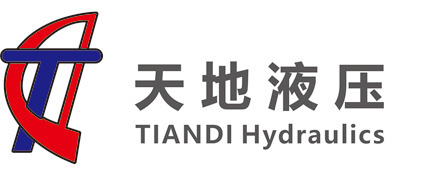GET THE LATEST NEWS FROM THE COMPANY
NEWS CATEGORY
Understanding Cartridge Valves: Essential Components for Efficient Fluid Control
Published:
2025-08-09 11:00
Cartridge valves are specialized components utilized in hydraulic and pneumatic systems to control fluid flow and pressure. They are designed to be compact and offer several advantages over traditional valve configurations. By integrating multiple functions into a single unit, cartridge valves simplify installation and maintenance while enhancing the overall efficiency of fluid control systems.
At the core of a cartridge valve's design is its modularity. Unlike conventional valves, which may require intricate piping and installation processes, cartridge valves fit directly into a predetermined cavity within a manifold or housing. This design not only streamlines the installation process but also allows for easy replacement and maintenance, reducing downtime and operational costs.
One of the primary functions of cartridge valves is to regulate fluid flow. They can be designed to function as flow control valves, pressure relief valves, or directional control valves, depending on the specific requirements of the application. For instance, a flow control cartridge valve can be adjusted to maintain a desired flow rate, optimizing the performance of hydraulic cylinders or motors. This adaptability makes cartridge valves ideal for a wide range of applications, from agricultural machinery to construction equipment.
In addition to their versatility, cartridge valves are also known for their reliability. Since they are often housed within a manifold, they are protected from external contaminants and physical damage. This design reduces the risk of leaks and failures, which can lead to costly repairs and operational inefficiencies. Moreover, the compact size of cartridge valves contributes to a more streamlined system, minimizing the overall footprint of the machinery.
Another significant benefit of cartridge valves is their ability to facilitate system customization. Engineers and designers can select specific cartridge valves that meet the unique requirements of their applications, allowing for tailored solutions that enhance performance. This flexibility is particularly valuable in industries where precision and efficiency are critical.
When integrating cartridge valves into a system, it is essential to consider factors such as the type of fluid, operating pressure, and temperature conditions. Proper selection and installation can significantly impact the efficiency and reliability of the entire fluid control system.
In conclusion, cartridge valves play a vital role in the world of industrial equipment and components. Their modularity, reliability, and adaptability make them an excellent choice for various applications in fluid control. By understanding their functionality and benefits, businesses can leverage cartridge valves to optimize their operations and achieve greater efficiency in their systems.
At the core of a cartridge valve's design is its modularity. Unlike conventional valves, which may require intricate piping and installation processes, cartridge valves fit directly into a predetermined cavity within a manifold or housing. This design not only streamlines the installation process but also allows for easy replacement and maintenance, reducing downtime and operational costs.
One of the primary functions of cartridge valves is to regulate fluid flow. They can be designed to function as flow control valves, pressure relief valves, or directional control valves, depending on the specific requirements of the application. For instance, a flow control cartridge valve can be adjusted to maintain a desired flow rate, optimizing the performance of hydraulic cylinders or motors. This adaptability makes cartridge valves ideal for a wide range of applications, from agricultural machinery to construction equipment.
In addition to their versatility, cartridge valves are also known for their reliability. Since they are often housed within a manifold, they are protected from external contaminants and physical damage. This design reduces the risk of leaks and failures, which can lead to costly repairs and operational inefficiencies. Moreover, the compact size of cartridge valves contributes to a more streamlined system, minimizing the overall footprint of the machinery.
Another significant benefit of cartridge valves is their ability to facilitate system customization. Engineers and designers can select specific cartridge valves that meet the unique requirements of their applications, allowing for tailored solutions that enhance performance. This flexibility is particularly valuable in industries where precision and efficiency are critical.
When integrating cartridge valves into a system, it is essential to consider factors such as the type of fluid, operating pressure, and temperature conditions. Proper selection and installation can significantly impact the efficiency and reliability of the entire fluid control system.
In conclusion, cartridge valves play a vital role in the world of industrial equipment and components. Their modularity, reliability, and adaptability make them an excellent choice for various applications in fluid control. By understanding their functionality and benefits, businesses can leverage cartridge valves to optimize their operations and achieve greater efficiency in their systems.
Cartridge Valves
previous page
previous page
Related news

